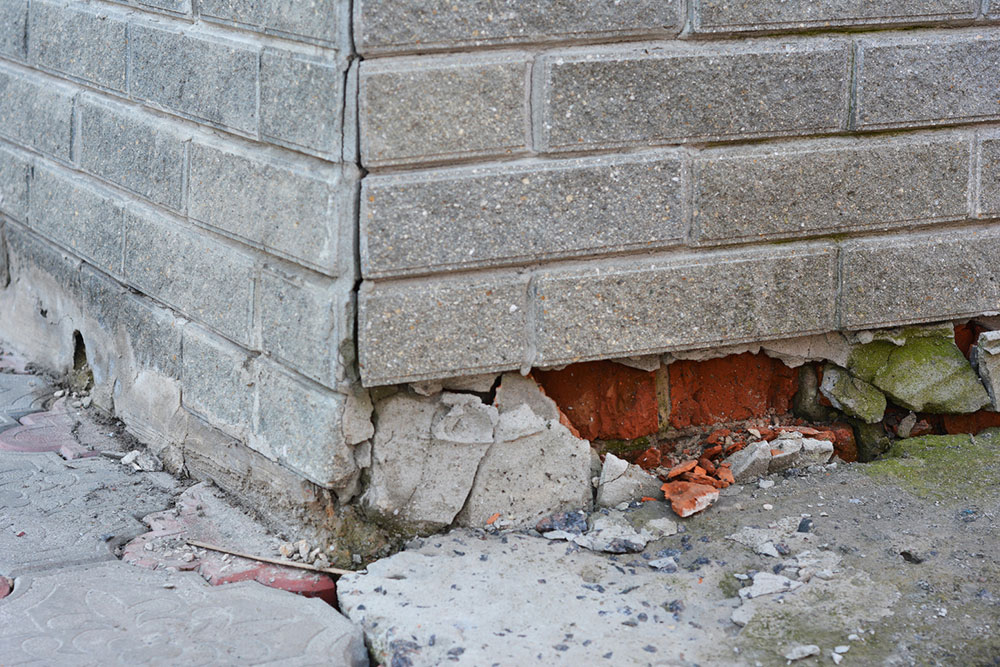9 possible warning signs of a weak house foundation

If one’s planning to buy a house or already owns one, it is important to ensure that the foundation of the property is strong enough to withstand the test of time. A weak foundation can lead to serious consequences and cost a dime in the near future. To avoid any unforeseen mishaps and safeguard the property, it is essential to recognize the signs of a bad foundation and take prompt corrective measures.
Wall cracks
Hairline cracks on exterior walls are a common occurrence. However, if cracks begin to appear to run deep or in a zigzag pattern or cause the foundation to protrude outwards, it could be indicative of foundation issues. In case the crack is horizontal, zigzag, lets water in, and/or is wider than a quarter of an inch, it is advisable to have it inspected by a professional.
In some cases, the wall may also begin to bow outwards. To check this, simply use a straight edge along the outside walls to assess the degree. Although minor bowing is common due to settlement, it is always best to have the issue checked by a foundation specialist to determine the main cause.
Similarly, cracked walls are common inside the house, too – especially those made from drywall. The cause of concern arises when the walls appear to be crumbling or sagging inwards, signaling problems underneath. It is also important to watch out for diagonal cracks and peeling wallpaper for any traces of foundation problems. Consider it a red flag if the cracks continue to lengthen or widen even after the foundation has settled or if the cracks appear suddenly after many years.
Bouncing floors
Underneath finished floors, a weak foundation and rotting structural beams can cause the floorboard to move, squeak, or bounce. This must be inspected and fixed promptly. On concrete floors, this may appear in the form of cracks.
Separation of cabinets or counters from the wall
The movement of walls and floors due to a bad foundation may also cause the cabinets and counters to become undone or appear uneven. Since this can be difficult to detect, one must keep a close eye on these fixtures occasionally.
Mildew buildup
The collection of moisture in nooks and crannies in the home can cause the growth of mold and mildew, which has an unpleasant smell. Although this isn’t always an indicator of a bad foundation, one needs to watch out for any accompanying cracks in the wall or foundation that could signal a larger issue. Moreover, the rotting smell will attract pests to the home, worsening one’s woes.
Cracked siding
The siding may become uneven or develop cracks for a myriad of reasons. When it comes to a bad foundation, it will have a few telltale signs – gaps between planks, growing cracks along the exterior walls, and space between the siding door and window frames.
Sticking doors
The changes in the home’s base can also make the flooring uneven. This results in doors sticking to the ground or the wall, making it difficult to move comfortably. They may also become difficult to latch. Although high humidity can cause this issue in some areas, if it persists, it may be time to get it checked professionally.
Foundation problems can also cause windows to stick, making it difficult to operate, move, or latch them. The unwanted pressure may also cause the window frames to pull away from the wall.
Sinking ground
During construction, it is important to ensure that the water drainage is carefully planned, especially after rainfall or a snowstorm. Generally, this water is directed away from the home to prevent damage to the foundation. However, if the foundation is compromised, the home may begin to sink, resulting in water pooling around the base of the property.
Drainage issues
Sinking foundations and waterlogging can also lead to drainage and plumbing problems inside the house. The pipes may become unbalanced, causing a blockage in the flow. If this begins to occur, get an expert to inspect the siding, walls, floors, and foundation for any underlying issues that may contribute to the problem.
Nails popping out of drywall
One nail popping out of the wall may not be a major cause of concern. However, if it begins to occur frequently in different parts of the house, it could be an indication of a bigger problem. This could mean that there is a lot of stress or pressure building up in the walls due to a weak foundation.

